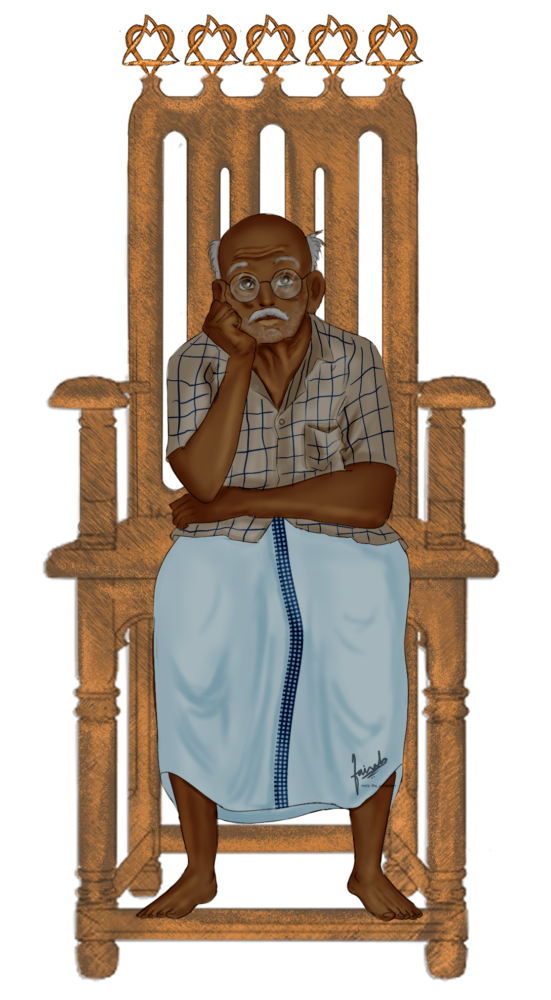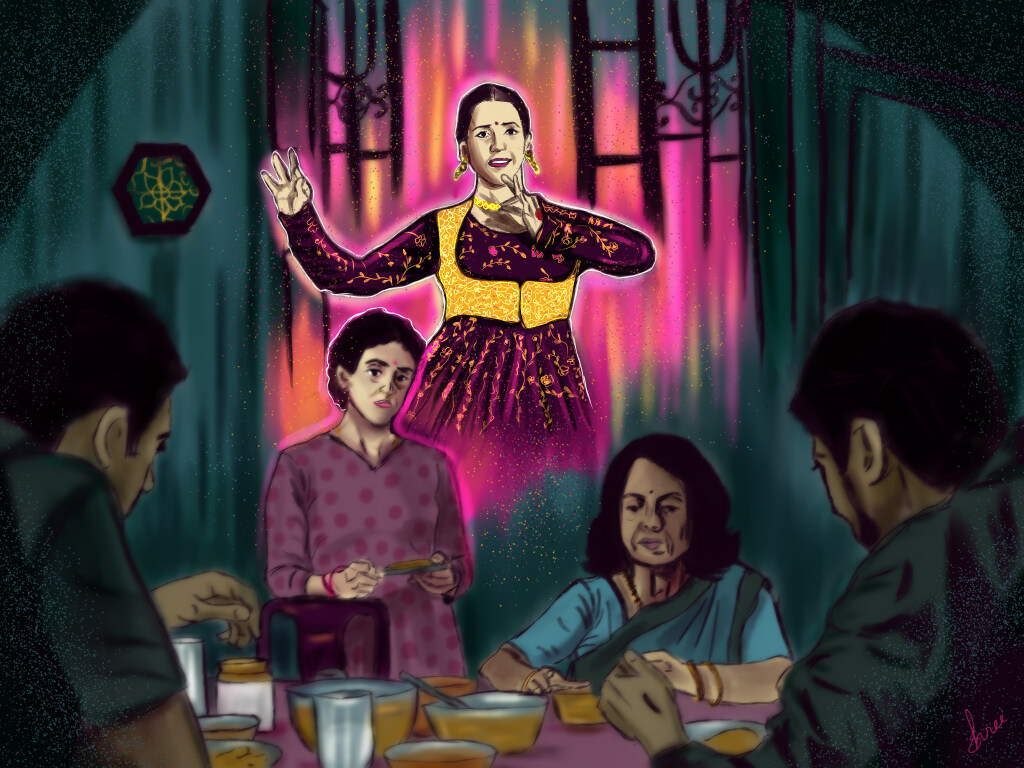Movie Review: Sanya Malhotra’s stirring performance in MRS
Nirupama Tiwari is a Political Science postgraduate with a deep interest in geopolitics and contemporary Indian politics. She is passionate about analysing how political shifts influence both domestic and international landscapes. Alongside her academic pursuits, Nirupama enjoys sharing thoughtful reviews on books and movies, merging her love for storytelling with a critical lens shaped by political insight.
Patriarchy is not limited just to the “men” of the society. It is deeply embedded in women as well. It has culturally become a part of society that it seems normal now. In a recent release, this was broadcast by Sanya Malhotra’s ‘Mrs’. It is a Hindi remake of the Malayalam drama film ‘The Great Indian Kitchen’ written and directed by Jeol Baby. Nimisha Sajayan has played the wonderful role of the protagonist.
I wasn’t very sure if Sanya Malhotra would be able to perform with the same enthusiasm. But after seeing the movie, Mrs Sanya Malhotra’s acting is commendable.
The movie starts with Richa (Sanya Malhotra), who is a dancer, meeting Diwakar (Nishant Dahiya), who is a gynaecologist. In a restaurant, Richa tells Diwakar how much she enjoys pizza, and Diwakar tells Richa that he likes simple home-cooked meals. After their wedding, she’s learning how to run a household from her mother-in-law, and her life unfolds in the kitchen. Richa is serving dinner to her father-in-law (brilliantly portrayed by Kanwaljit Singh), who stops her, saying that she is supposed to serve with your right hand and not left because people don’t even serve food to beggars with the left hand. She is also questioned about cooking biryani in a cooker, as it has now turned into pulao. Richa works day and night for appreciation, yet she receives none. The smile from the opening scene that can be seen on Richa’s face can be seen disappearing. The household is simply taking a toll on her. Richa does everything to be a good wife and please her husband and father-in-law; cooking, cleaning, washing from morning to night. As time wears on, Richa becomes more and more frustrated with the number of tasks she is given and the lack of satisfaction and consideration given to her.
It’s very scary to see how many women are able to relate and what women go through after marriage. From home-cooked food to ‘garam-garam phulkas’ and making them when people are having food, ‘silvatte ki chatni’ and not chatni on a mixer and grinder. From rice cooker to mixer and grinder, these were invented to make life easier and it’s less time-consuming. But the patriarchal society knows that women can get time to think about themselves, so let’s make her do things on traditional silvatta and other appliances, so she doesn’t get much time.
Another thing that is shocking to see is the efforts by men to run the household. It’s heartbreaking to see how many women are relating to this movie. Women who are well educated and deserving are sitting at home and doing these chores because the household doesn’t want to eat food cooked by a daily help or cook. It will be a myth to consider that these scenarios exist in the rural part of the country. But it does in every second house, from rural to urban.
It’s satisfactory to see how a group of decent men, who are not drunkards and beaters, consider it absolutely very normal to see women doing household chores and not giving them a chance to work or do as they desire. There’s nothing unique about this story. It’s a very representative image of a happy household where men come back from work and are served by their wives and daughters. In this movie, the exhaustion can be seen in the hands repetitively washing, cleaning, and cooking.
Diwakar is a near mirror image of his father, a man who expects his wife to put away his clothes and his underwear and give them in the morning as he rests on an easy chair. From sitting across from his father having breakfast and dinner, and being served by the ladies of the house, Diwakar only helps Richa when they’re visiting Richa’s friend. Diwakar was also confronted by Richa that he doesn’t help her in the household, but helped her at a friend’s house. The only time Richa smiles her heart out is being at her friend’s house and eating what she liked and not eating what the men of her new household liked.
The food prepared by the ladies is lip-smacking and delicious. Yet it delivers how and in what condition they are prepared. A woman who gets up before everyone just to clean and prepare food seems very normal, but working like this every day of your life is a challenge that women face, even today, after generations. Yet no one appreciates the daily hard work of women, and they are taken so much for granted that it is considered normal.
The movie also shows how menstruation is seen in Indian households. It is the only time when Richa is allowed to relax. She is shut inside without anything to do, except to watch videos on Facebook. Women and their periods are still considered taboo in most households in India. It is considered impure and dirty, and if you come in contact with the rest of the house, you will make it impure as well.
There’s a scene in the movie where Richa notices the leaking sink and complains about it to Diwakar. Diwakar does nothing about the leaking of the sink. The leaking of the sink can be seen as a metaphor in the life of Richa. The household is already patriarchal, and no man is doing anything to fix it. After the bucket that Richa has put inside the leaking sink is full, she throws it at her husband and leaves. This signifies how the pain and frustration gradually build up in Richa’s life, and she couldn’t hold it anymore like the leaking sink. Another detail in the movie shows how Richa returns and leaves the house. The start of the movie shows the exact opposite of this as Richa, newlywed, is welcomed for the first time into the house.
Now, patriarchy touches all of us but goes unnoticed. It doesn’t have to be very sigma roles, rather smaller ones that we think are normal. It is still in the popular culture for women in India to mention either their father’s name or their husband’s name to fill up different forms. There are many practical examples where the patriarchal system of society is reflected in everyday life. Patriarchy is also prioritizing giving sons/male members in everyday life, like in terms of toys, clothes, food, and education.
In a family structure, roles and responsibilities are pre-defined. The men in the family are responsible for the finances, decision making, and security, whereas women are given responsibility for household chores and raising children. This may not just be a case of the rural sides but also the urban culture where women, after doing the same jobs as men, are supposed to look after children more than a man and to look after the family. The inheritance practices are still prevalent where the elder son or the sons of the family are supposed to inherit the family’s property. If there are rituals in the house, it is also supposed to be performed by the male members of the family.








